Fern soil, its composition, how to properly replant a fern
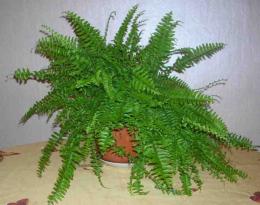
Fern - one of the most ancient and mysterious plants on our planet. There are many legends about him, numerous signs and beliefs are associated with him. Flower growers fell in love with it for its bright greenery and fairly easy care. Let's figure out what kind of soil is needed for planting ferns, and whether you can prepare it yourself.
Content:
- Soil for indoor ferns - the best composition
- What ready-made soil can be purchased in stores?
- Transfer rules
- Causes of drying and shedding of leaves: how to save a fern
Soil for indoor ferns - the best composition
Ferns belong to the department of vascular plants, are perennial epiphytes and are divided into several categories and species:
- Tree-like.
- Herbaceous.
- Aquatic.
- Ground.
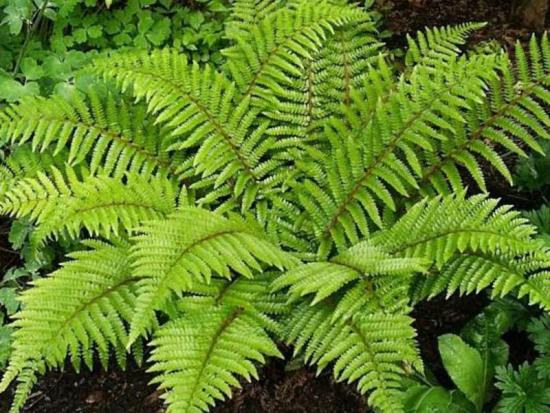
Along with wild species, a large number of cultivated species have been bred that can be grown at home:
- Nephrolepsis is native to the tropics of America with large leaves, curved in an arc, each 45-60 cm long. This is one of the most common and unpretentious species for growing at home.
- Adiantum (Venus hair). This species loves dark areas and has thin, lacy and light-colored leaves on dark stems.
- Platicerium is a plant with large flat leaves reaching 60-70 cm in length with a bluish bloom. Due to its growth in different directions, it looks like a deer's antlers.
- The common ostrich grows in damp forests and in floodplains and resembles the shape of the plumage of an ostrich.
- Orlyak - a common species that can grow even in dry areas.
- The male shield prefers moist, shady forests and is poisonous. The foliage grows very slowly up to 30-150 cm.
- The female kochedynik is found in ravines and peat bogs. The foliage is openwork, carved, and dies off during the cold season.
- Davallia has characteristic red-colored rhizomes that hang from the edges of the flowerpots. The foliage is lush green.
- Asplenium is distinguished by wavy edges of leaf blades. Doesn't like having its leaves touched.
- Blekhnum resembles a palm tree, and the crown, consisting of hard fronds, grows up to 1 meter in diameter.
- Polypodium (centipede) is characterized by large, strongly dissected leaves, and the bush is able to grow in the air, holding the rhizome to the surface.
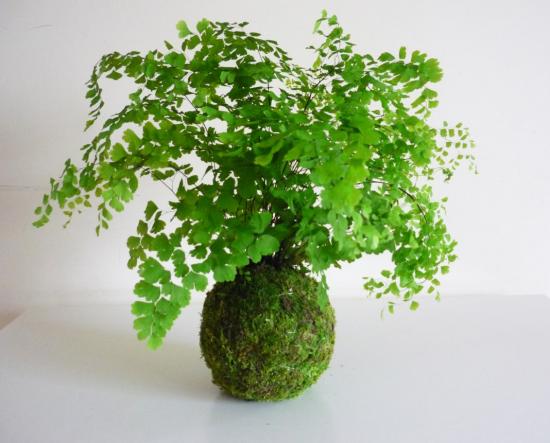
The optimal soil for growing nephrolepis or indoor fern is loose soil filled with humus from fallen leaves, peat, pine needles, coarse sand, turf soil.
The acidity of the soil for ferns should be slightly increased. The ideal option is the presence of leaf, turf, peat soils, sand and humus.
What ready-made soil can be purchased in stores?
Now on store shelves you can find various types of soil for indoor plants. They indicate acidity, ingredients, composition.
Knowing what soil composition is favorable for nephrolepis, you can find a suitable one in specialized stores, with a recommended acidity of 5-6.6 ph.
Vermicompost in various variations and leaf humus are added to purchased soil for succulents (peat, sand, minerals).
But in any case, this soil should not contain:
- stones
- glass
- large pieces of wood
- seeds weeds
For young bushes, the soil should be shallower, softer, and more loose. To create this effect, expanded clay, foam chips, and ground pumice are added to the pot in small proportions.
There are several popular methods for preparing and preparing the soil yourself.
Leaf soil is mixed with verticulite, expanded clay, greenhouse and turf soil, and coarse sand in a ratio of 2:1:1:1:1.
Mix in equal proportions humus, peat and leaf soils.
Mix peat, humus, and leaf soil in equal proportions and add a little bone meal, about 1/5, to the resulting mixture.
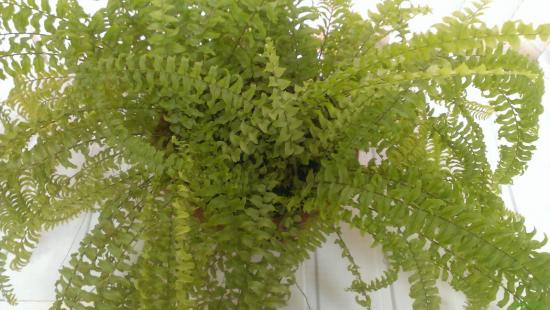
You cannot use heavy clay soils, since nephrolepis will not be able to fully receive nutrients and liquid, it will begin to hurt, and the root system will rot in such an environment.
Transfer rules
Many gardeners ask the question of how to replant a fern, although in fact it is simple to do.
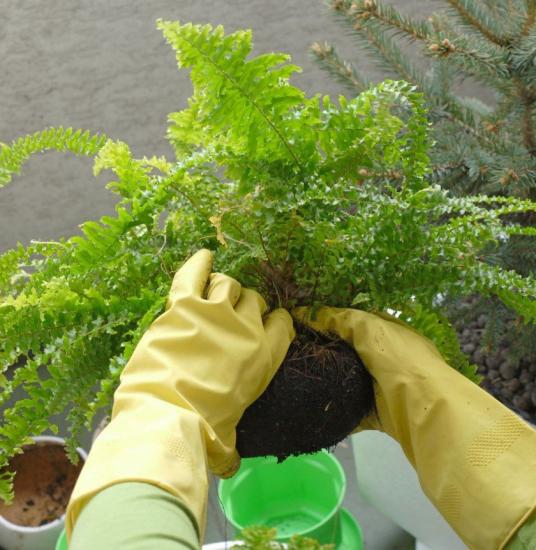
The main thing is to follow a number of rules:
- replant 1-2 times a year in the spring, but only when the root system has grown and completely occupied the volume of the entire pot
- at replanting in autumn the plant may often get sick
- if the roots have not grown completely, only replacing the top layer of soil will be sufficient.
It is advisable to choose a pot based on the following principles:
- The width of the planting container must be equal to the height
- The bottom is wide enough, not narrow
- smooth, not thick walls
- porous, breathable material
- size - 2-3 cm in diameter wider than the previous one
Based on the basic requirements, fired clay pots are considered the most suitable.Nephrolepis is replanted only by transshipment, without clearing the roots of the old soil, so as not to injure them.
The bush is taken out of the pot, transferred to a new one and fresh soil mixture is added, leaving the base of the stem above the surface.
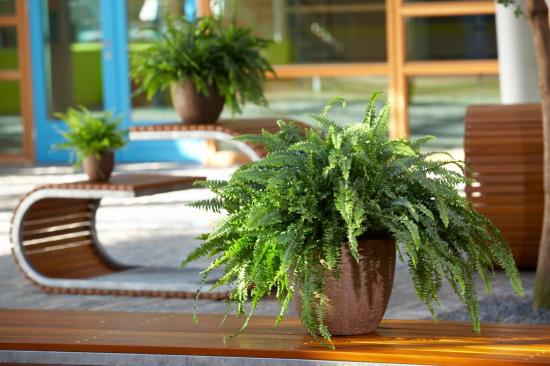
Nephrolepis should be planted no deeper than in the previous pot.
Causes of drying, shedding of leaves, how to save a fern
The main reasons for foliage drying out can be different.
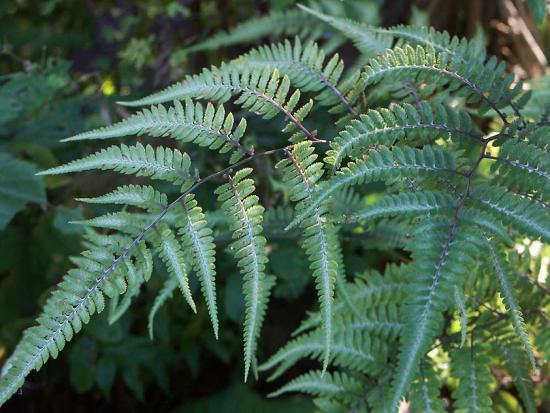
Dry air
Most often, amateur flower growers encounter this phenomenon in the off-season, in spring and autumn, when the heating is turned on or has not yet been turned off.
Too high room temperatures in combination with dry air coming from the radiators leads to a gradual drying of leaves, starting from their tips. Or brown spots appear, spreading throughout the entire leaf blade.
Incorrect watering mode
It is necessary to maintain constant humidity in the pot, without overwatering, but also without allowing the earthen clod to dry out frequently.
The appearance of pests
Frequent “guests” on this handsome indoor house include: scale insect, feeding on sap from leaves and stems. The active activity of the pest leads to the gradual death of foliage.
Overmoistening
Excessive watering has the same negative effect as overdrying. The first signs of waterlogging are brown or brown spots on the leaves, then they dry out completely.
How to help the plant? To know how to save a fern, you need to clearly understand the cause of the problem.
If the cause of all the troubles is a scale insect, you need to start fighting it as soon as possible:
- remove all damaged leaves
- treat the bush and the container in which it is located with insecticides, sometimes with repeated treatment
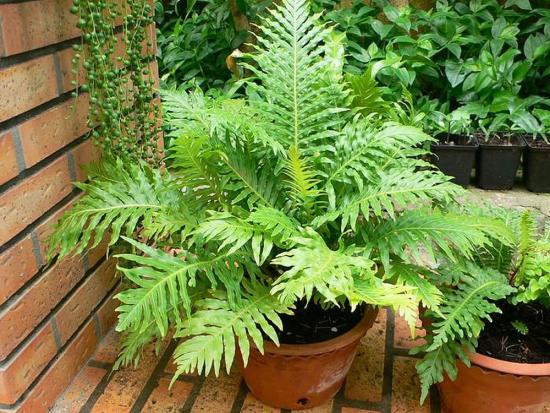
If the indoor air is dry, moving the fern pot away from the radiators, covering them with a damp cloth, daily spraying with a spray bottle, and using humidifiers will help.
If the fern dries and crumbles as a result of a violation of the water regime, it is easy to revive and restore it: the container with nephrolepis is immersed in settled water at room temperature until the earthen clod is completely moistened.
Repeating the procedure once a week will quickly save any plant, even a very dried one.
Flower growers all over the world value indoor fern for its ease of care and high decorative value. Many of its types are capable of purifying indoor air, which is important for residents of large cities.
In order to grow a beautiful fern, all you need is to choose the right soil mixture and follow the regime glaze.
We invite you to watch an interesting video about planting and growing ferns as a houseplant:

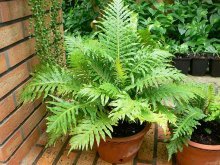
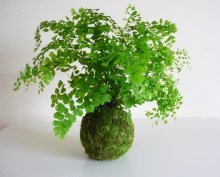

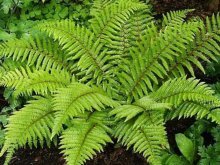
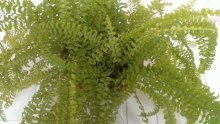
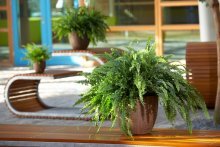
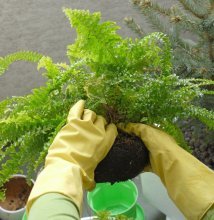
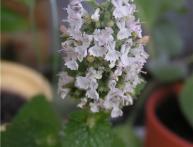


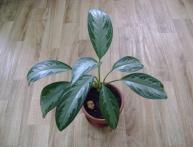
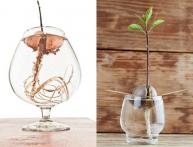
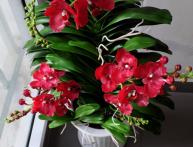

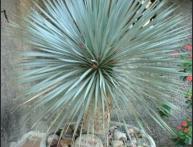
Comments
I would not say that the fern is unpretentious, or that it is not doing well with me. I noticed that he loves humidity and not only the soil, but also the air, which, of course, I could not provide him with in my apartment with central heating in the winter. And the flower eventually turned yellow and withered.
The fact is that in our city apartment the fern does not take root, no matter how hard we try, the air is apparently dry. But at the dacha, the fern grows quite well along the fence.
We have such a plant, very beautiful, when the need arises for replanting, my mother and I specially buy soil at a flower shop, everything is already prepared for this.